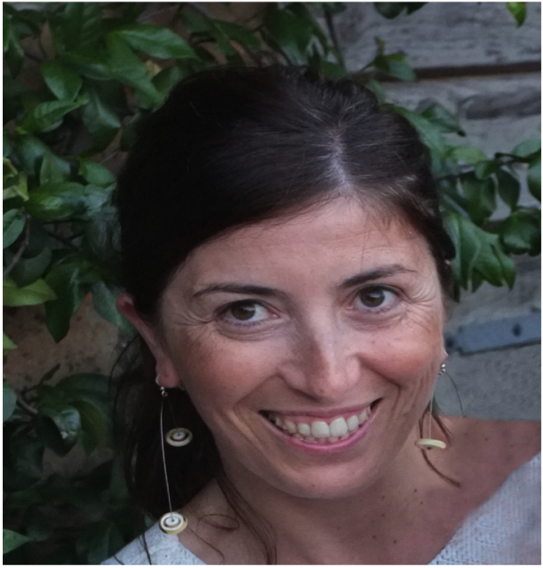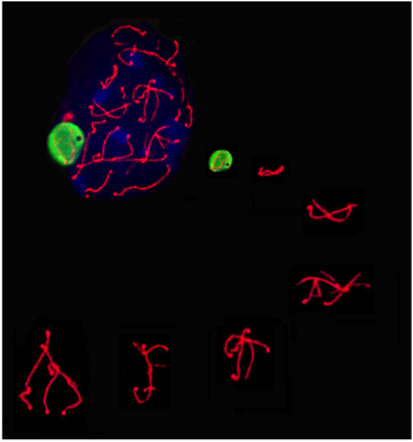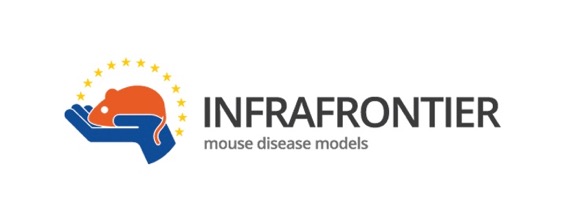
Mouse mutant models of brain and male reproductive system development
Keywords: Mouse mutant, G-protein coupled receptor, Infrafrontier
In the last decade the research activity of our laboratory has mainly focused on the production and functional characterization of novel mouse mutant models of brain and male reproductive system development. We produced, in our laboratory, murine mutants of orphan G-protein coupled receptors, which specifically modulate cerebellar cell proliferation and differentiation, in normal or pathological conditions and a novel in vivo models of cerebellar tumors like. Detailed studies of altered development and differentiation of mouse cerebellar granule, Purkinje neurons and Bergmann glia astrocytes, at various peri- and postnatal stages (postnatal day 0 to 25) and in adulthood highlighted a novel functional roles of Bergmann glia astrocytes in cerebellar cell proliferation and differentiation. These studies also showed that G-protein-coupled receptor-null mutant mice exhibit an impaired spermatogenesis and fertility, caused by an altered Sertoli cell proliferation and differentiation associated to Desert Hedgehog (Dhh) mitogenic cascade pathway modification.
In addition, we have been participating in the histopathology screening pipelines of the International Mouse Phenotyping Consortium (IMPC; mousephenotype.org), the INFRAFRONTIER European Union’s Landmark Infrastructure (Infrafrontier.eu) and related International Consortia (EUMORPHIA, EUMODIC, EUCOMM-EUCOMMTools, PHENOSCALE, etc.), for large-scale, integrated and standardized production, primary and specialized phenotyping, dissemination of mouse mutant strains as novel in vivo model human diseases.

Figure legend
Immunofluorescence staining of meiotic spread of mouse testis.
Homologous chromosomes, stained for SCP3 (red) and y-H2AX (green), during the prophase of meiosis. SCP3 gene is required for synaptonemal complex assembly and y-H2AX for DNA assembly during meiotic stage.
Image selected for CNR 90th Anniversary ‘RiScattiamo la Scienza’
POSITION TITLE: Technologist
Education
- 02/2008: University of Rome “Tor Vergata” | Ph.D. | Science and Biotechnologies of Reproduction and Development
- 02/2001: University of Rome “La Sapienza” | M.Sc | Biology
- 07/1992: Liceo Classico ‘Pietro Giannone’ San Marco in Lamis (FG) | B.A |Humanities
Personal Statement
In the last decade the research activity of our laboratory has mainly focused on the production and functional characterization of novel mouse mutant models of brain and male reproductive system development. We produced, in our laboratory, murine mutants of orphan G-protein coupled receptors, which specifically modulate cerebellar cell proliferation and differentiation, in normal or pathological conditions and a novel in vivo models of cerebellar tumors like. Detailed studies of altered development and differentiation of mouse cerebellar granule, Purkinje neurons and Bergmann glia astrocytes, at various peri- and postnatal stages (postnatal day 0 to 25) and in adulthood highlighted a novel functional roles of Bergmann glia astrocytes in cerebellar cell proliferation and differentiation. Impaired spermatogenesis and fertility, caused by an altered Sertoli cell proliferation and differentiation, are also observed in G-protein-coupled receptor-null mutant mice.
In addition, we have been participating in the histopathology screening pipelines of the International Mouse Phenotyping Consortium (IMPC; mousephenotype.org), the INFRAFRONTIER European Union’s Landmark Infrastructure (Infrafrontier.eu) and related International Consortia (EUMORPHIA, EUMODIC, EUCOMM-EUCOMMTools, PHENOSCALE, etc.), for large-scale, integrated and standardized production, primary and specialized phenotyping, dissemination of mouse mutant strains as novel in vivo model human diseases.
Positions and Honors
Positions and Employment
- 2018- Tecnologist/Researcher (permanent position), Italian National Research Council (CNR) Institute of Biochemistry and Cell Biology (IBBC), Campus A. Buzzati-Traverso, 00015 Monterotondo (Rome)
- 2010- 2018 Research Scientist Italian National Research Council (CNR) – Institute of Biochemistry and Cell Biology (IBBC), Campus A. Buzzati-Traverso, 00015 Monterotondo (Rome)
- 2009- 2010 Post-Doctoral Fellow, University “Foro Italico” Department of Health Science, Rome
- 2004- 2006 Post-graduate Fellow, University of Rome “Tor Vergata” Department of Public Health and Cell Biology, Section of Histology, Rome
- 2001 – 2003 Post-graduate Fellow, National Institute of Public Health, Department of Public Health and Cell Biology, Laboratory of Toxicology, Rome
Honors
- October 2004 Visiting researcher at Center of Excellence on Neurodegenerative Diseases, University of Milan, Italy
- June 2013 Photos selected for photo exhibition ‘RiScattiamo la scienza’ dedicated to the CNR 90 th anniversary
- Di Pietro, G. La Sala, R. Matteoni, D. Marazziti, G. P: Tocchini-Valentini (2019). Genetic ablation of Gpr37l1 delays tumor occurrence in Ptch1+/- mouse models of medulloblastoma. Exp Neurol 312, 33-42.
- La Sala, D. Marazziti, C. Di Pietro, E. Golini, R. Matteoni and G. P. Tocchini-Valentini (2015). Modulation of Dhh signaling and altered Sertoli cell function in mice lacking the GPR37-prosaposin receptor. FASEB J 29, 2059-2069.
- Marazziti, C. Di Pietro, E. Golini, S. Mandillo, G. La Sala, R. Matteoni, and G. P. Tocchini-Valentini (2013). Precocious cerebellum development and improved motor functions in mice lacking the astrocyte cilium-, patched 1-associated Gpr37l1 receptor. Proc Natl Acad Sci USA 110, 16486-16491.
- Jan Rozman et al (La Sala G* in International Mouse Phenotyping Consortium) (2018), Identification of genetic elements in metabolism by high-throughput mouse phenotping. Nat Commun. (2018) 9:288
- Michael R. Bowl et al. (La Sala G* in International Mouse Phenotyping Consortium) (2017), A large scale hearing loss screen reveals an extensive unexplored genetic landscape for auditory dysfunction. Nat Commun. Oct 12;8(1):886.

Project member:
- PRIN-MIUR 2017: Early dysfunctions of intercellular signalling in brain disorders (n. 20175C22WM) 2019-2022
- It. National Research Council-Infrafrontier Network
Infrastructure; Landmark Project of ESFRI Rodmap; Selected Project of It.
Ministry of Research Roadmap for Research Infrastructures of Pan-European
Interest and National Programme for Research Infrastructures
Since 2011 (on-going) - National Research Council-It. Ministry of Research, “Aging”
Strategic Project 2012–2016, WP 1.8 “Transgenic Models of Brain Aging and
Longevity”.
2012 – 2016 - European Union Framework Programmes Projects (EUMORPHIA, EUMODIC, PHENOSCALE, EUCOMM, EUCOMMTools grants)
